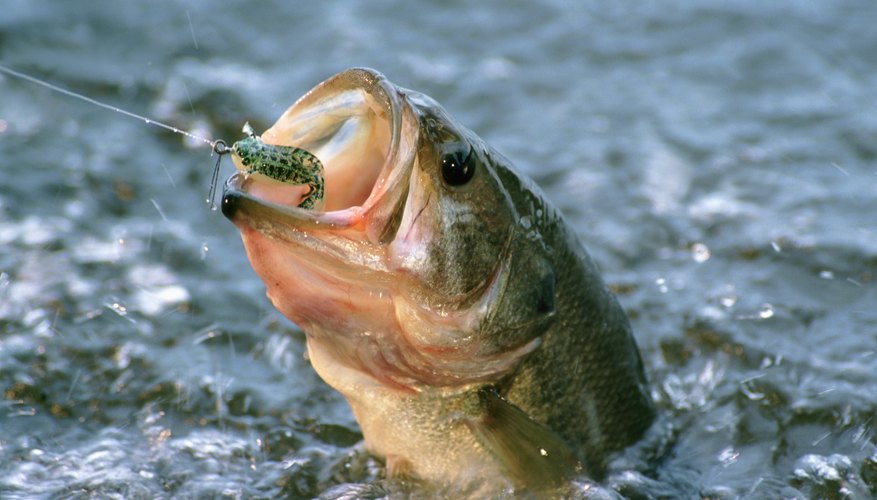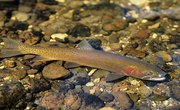
Largemouth bass are among the most sought-after game fish in North America. These fish live in many bodies of water around the region, and are easily identified by their green color, a dark, blotchy stripe down their sides, and their massive, gaping mouths. But identifying the sex of a largemouth bass is much harder than identifying the fish themselves. Much to anglers' chagrin, male and female largemouths appear virtually identical, but there are a few ways to tell the difference.
Look at the size of the fish. Females are often a lot bigger than male largemouths, and they also live longer. Almost all largemouth bass over 8 or 9 pounds are female. Males also mature more quickly, so when bass pair off to spawn in the springtime, spawning pairs nearly always consist of a smaller male and a larger female. In addition, male bass are responsible for making nests and guarding eggs during the spawn, so if you see a nest with a single largemouth bass in it, you can be fairly certain that it is a male.
When you catch a largemouth bass during or immediately before the spawn, there is a simple method to find out its sex. Hold the fish and gently push its belly with your fingers, moving back toward the tail. A milky, white substance called milt will be extruded from the anal opening, or vent, of males. In contrast a few greenish-colored eggs will be visible in the vent of females. Unfortunately, this method is effective for little more than a month out of the year.
You can also look at the shape of the vent, which can sometimes indicate the sex of the bass. This method is prone to error and is rarely relied upon by biologists, but doing this may allow you to make a guess about the sex of the fish. Generally, the vent of a male largemouth bass is circular in shape, while the vent of a female is more elliptical or oval. This is only a general guideline, and can sometimes lead to mis-identification by even the most well-trained eye.
References
Writer Bio
When Richard Corrigan isn't writing about the outdoors, he's probably outside experiencing them firsthand. Since starting out as a writer in 2009, he has written for USA Today, the National Parks Foundation and LIVESTRONG.com, among many others, and enjoys combining his love of writing with his passion for hiking, biking, camping and fishing.



